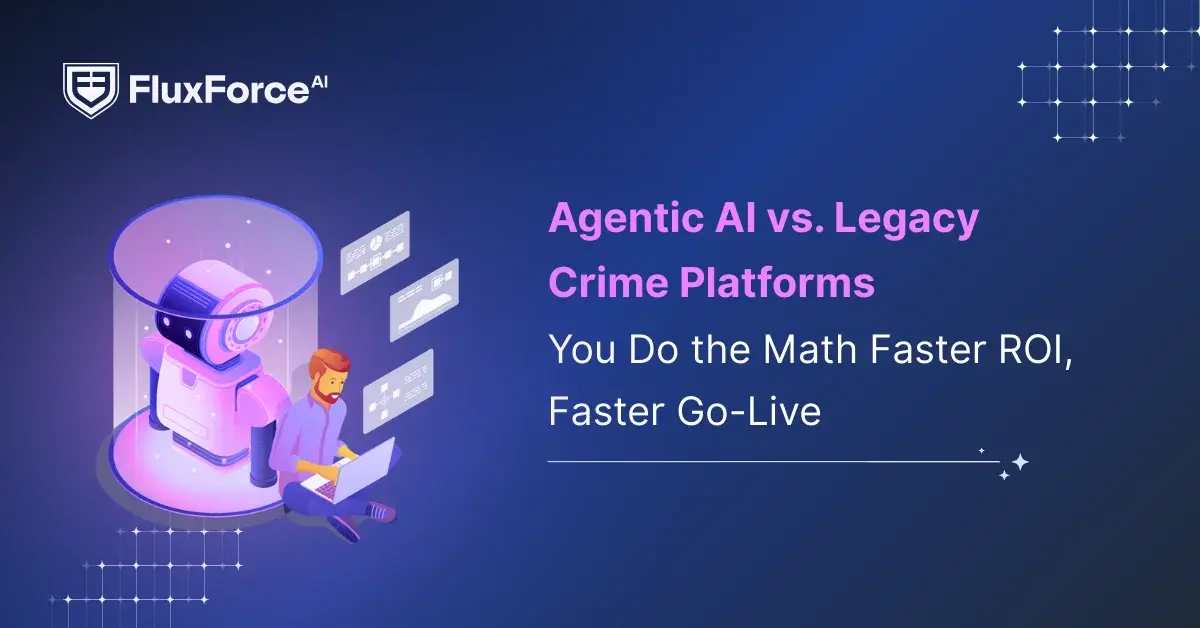Listen To Our Podcast🎧

Introduction
Every minute, thousands of digital payments fly across the globe. But with each rush of money, banks and businesses face a tough question: can your security catch fraud right as it happens or does it spot trouble after it’s already too late?
Most companies used to rely on old school systems that check transactions hours or days later. But today, real-time fraud detection systems are a must. They watch and block risky payments the instant they happen. If you work in banking, retail, or online payments, failing to keep up can mean lost money, fines, and a damaged reputation.
This is where real-time payment fraud prevention and Agentic AI for API monitoring come in. These new tools use smart software (AI) to check payments and user actions as they flow through your systems. With AI-powered transaction monitoring, companies don’t just find problems after the fact, AI can spot complex scams in the very second they start.
Think about APIs (the software bridges that let different systems talk to each other). Fraudsters often target these gaps, using fake accounts and bots to sneak in money. With API security automation, your system checks every API call automatically and blocks anything suspicious with no manual delay. That’s why online fraud detection using machine learning and real time fraud detection machine learning are the new standard. These AI models making it harder for criminals to beat your system.
Recent numbers show about 1 in 5 payment fraud cases use API weaknesses. So, if you’re still using checks based on old data, you’re just playing catch up. Forward-thinking leaders now use fraud detection using machine learning in banking and real time fraud detection right at the heart of every digital payment helping teams fight fraud before money leaves the account.
Is your platform ready for this new level of protection? Or are you relying on outdated systems while fraudsters find new ways to exploit gaps? With ML based fraud detection, the smartest banks and payments teams are speeding up their defenses and staying one step ahead of risk.
How Agentic AI changes API security?

In the world of payment security, speed and smart automation are everything. Traditional rules-based systems flag transactions based on fixed patterns, which often miss new, evolving fraud tricks. This is where Agentic AI for API monitoring steps in with a major advantage by acting on its own, learning and adapting as threats change.
Imagine AI agents working 24/7 behind your APIs, constantly scanning payment flows, analyzing behavior, and making decisions instantly. This API security automation doesn’t wait for human approval to block suspicious activity rather acts immediately to stop fraud from happening.
How Autonomous AI works in payment monitoring
Agentic AI systems perform AI-powered transaction monitoring by observing every API call and transaction detail. Unlike traditional detection methods, these AI agents use Agent-based AI fraud detection that adapts to patterns in real time and scores risk dynamically via Automated Fraud Risk Scoring. They can spot unusual spending habits or login behaviors by applying behavioral transaction analysis, identifying subtle signs of fraud missed by older systems.
Because of their autonomy, agentic AI agents can handle huge volumes of data without slowing down payments, keeping your platform secure and smooth. They also focus on API threat detection using AI.
Industry reports show that organizations using these systems improve detection rates by up to 50% while reducing false alerts that waste team time. This means faster, smarter fraud responses and less customer frustration.
Real-World API fraud defense

Visa’s trusted agent protocol, a live example of Agentic AI halting real-time payment fraud
In October 2025, Visa introduced the Trusted Agent Protocol, a new global security system designed to protect API-based and AI-powered payment environments. This innovation comes at a time when Agentic AI systems and shopping bots have caused a massive 4,700% increase in online retail traffic over the past year.
How it works ?
The Trusted Agent Protocol allows merchants to verify the identity and intent of AI agents that make payment requests through APIs. This ensures that only approved and verified bots can make purchases or access sensitive financial data. Each AI agent goes through a registration and security check before it is allowed to transact. During this process, the agent is given a unique digital signature and must meet Visa’s security and reliability standards.
When an agent initiates a payment or API call, the request includes details such as:
- The agent’s verified identity
- Purchase intent
- Recognized account information
- Optional payment data
Merchants can then confirm the agent’s signature instantly through Visa’s directory and security tools. This process happens in real time at the API level and does not require any code changes to the merchant’s systems. All actions such as browsing, payment attempts, and purchase intent, are verified and logged for compliance tracking.
Onboard Customers in Seconds

The results
Visa’s new API security layer fills a critical gap that traditional bot-detection tools could not address. Until now, it was nearly impossible for retailers to tell the difference between fraudulent bots and legitimate AI agents making real purchases.
In its first year, Visa reported that this technology helped block $40 billion worth of fraudulent payment attempts, a large share of which involved AI bots testing stolen card details through APIs.
The trusted agent protocol also helped reduce false declines, giving merchants a smoother checkout experience for verified AI traffic. Additionally, it provided better visibility into AI-driven transactions, helping businesses monitor and understand agent-based activity.
How industry leaders are operationalizing Agentic AI for payment API security ?

AI is no longer just assisting customers. It is now handling payments, making purchases, and connecting directly with APIs. This next stage, known as Agentic AI, is transforming how digital payments operate.
However, this progress has created a new concern that how can businesses ensure AI agents make payments safely and comply with regulations?
Global payment networks, fintech innovators, and banking leaders are now adopting smarter, AI-driven protection methods. Let’s look at how the industry is using agentic AI to build stronger and more secure payment systems.
1. Redefining trust in AI-led transactions
In the past, banking fraud detection systems were designed for human behavior. They monitored device data, card verification, and location. But agentic AI changes this process. Bots now act on behalf of real users and make direct API-based payment requests.
To keep up, companies like Visa, Mastercard, and Razorpay are implementing ways to verify the identity and purpose of AI agents before they can complete a transaction.
For example:
- Visa’s trusted agent protocol assigns digital signatures to AI agents, confirming that each bot is trusted and verified before any payment request is processed.
- Mastercard’s agent pay gives every AI agent a secure token to track and authenticate all payment actions.
These updates bring AI-driven payments under the same level of trust as traditional FinTech payment security solutions, ensuring every agent follows clear, trackable security standards.
2. Securing payments at the API level
Most digital fraud now targets APIs. Fraud bots often test stolen card details or imitate legitimate customers through API calls.
To fix this, payment leaders are moving their security to the API level, focusing on open banking API fraud prevention and PCI-DSS and API compliance automation.
Here’s how it works:
- Each AI agent is registered, given a unique ID, and validated through the payment network’s trusted directory.
- Every API payment call includes verified identity, purchase intent, and account data.
- Merchants instantly confirm if an agent’s request is from a secure source using Visa or Mastercard’s validation tools.
- All activity is logged for compliance with PCI-DSS and open banking security standards.
This setup blocks unauthorized bots and reduces false declines for trusted AI-driven payments. It improves security while maintaining a smooth payment experience for legitimate transactions.
3. Easy integration for merchants
Businesses want stronger protection without having to rebuild their systems. That’s why new AI verification tools are built for plug-and-play integration with existing payment APIs.
Visa’s trusted agent protocol, for instance, performs authentication at the API level. Merchants can instantly verify agent identity without changing their code or checkout process.
This approach helps organizations stay compliant with ISO 20022 payment monitoring and other financial data standards while improving fraud detection accuracy.
4. Strengthening governance and risk controls
Agentic AI introduces new management challenges. Who controls the AI agent? What if it makes unauthorized purchases? How do we ensure full visibility?
Financial organizations are tackling these questions with high-velocity payment risk controls and improved governance models. Examples include:
- Assigning clear permissions and spending limits to each AI agent.
- Monitoring every API call in real time for potential misuse.
- Linking AI activities to Faster payments network fraud risk systems for quicker incident response.
- Recording all agent-led transactions to meet internal and regulatory audit needs.
These systems turn governance into a strength, reducing fraud and improving transaction approval rates.
5. From risk to competitive advantage
Agentic AI is already in use in today’s financial systems. Visa recently reported that its verification system helped block 40 billion dollars in fraud attempts through real-time API checks.
By combining banking fraud detection systems, FinTech payment security solutions, and open banking API fraud prevention, industry leaders are proving that AI can enhance both safety and user experience.
This evolution also supports ISO 20022 payment monitoring, PCI-DSS compliance, and faster payments network fraud risk management, helping businesses stay secure while meeting strict regulatory demands.
As the financial world continues to evolve, one thing is certain. AI agents will soon be part of every online transaction, and the organizations that secure them now will lead the next phase of trusted digital payments.
Onboard Customers in Seconds

Conclusion
Agentic AI is changing how businesses protect real-time payments on APIs. Leaders like Visa and Mastercard have shown that using smart AI agents to check and verify every payment call can stop huge amounts of fraud while making sure good payments go through smoothly. This helps businesses cut losses, save time on manual checks, and follow important rules without hassle.
If your business wants to stay ahead and build trust with customers and partners, investing in agentic AI for API monitoring is a smart move. It’s not just about stopping fraud, it’s about leading new, safer ways to pay in a fast-moving digital world. Don’t wait for fraud to find the gaps; close them now with agentic AI.






Share this article